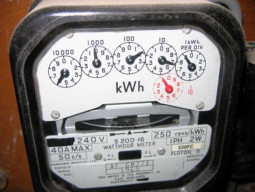
While the impact of the flood is visible in the figures for August, out of the 89 industrial product lines on which the Federal Bureau of Statistics collects data, 51 have shown negative growth. Therefore, the slowdown is widespread and not limited to a few sectors. The shutdown in some refineries during the flood is reflected in a large fall in production of POL products. But other sectors like textile, fertiliser, cement, iron and steel, tea, beverages and most electronic goods have also experienced a decline. This indicates that other factors, such as a general slackness in market demand and supply-side factors including continued loadshedding, have been operative in restricting production, along with the disturbed law and order situation in major industrial centres.
Industries which continue to show positive growth are those manufacturing automobiles, chemicals, footwear and TV sets. The question is whether better performance in these sectors will persist over the year. The quantum jump in procurement prices last year was a major factor in raising rural purchasing power and stimulating demand for a wide range of consumer goods. But conditions are very different this year, with the agricultural sector expected to show negative growth of over five per cent due to damage caused by the flood.
Looking ahead, as the process of reconstruction of infrastructure and housing commences, demand for building materials like cement and iron and steel is likely to pick up. But sugar cane crushing has not commenced yet and given flood damage to the crop, sugar production could be 15 to 20 per cent lower this year.
Rapid growth in manufacturing is vital for the realisation of the ambitious tax revenue target for 2010-11. Indirect taxes like sales tax, excise and customs duty have shown modest growth of below 14 per cent in the first two months of the fiscal year — just over half the annual target growth rate of 25 per cent — despite rising prices. It is not surprising that projections are being made that revenues will fall short by almost Rs100 billion by the end of the year.
Overall growth expectation for 2010-11 may need to be scaled down further unless the manufacturing sector recovers strongly. If the slowdown persists, even the low projected growth rate of the economy post-floods of 2.5 per cent or so may not materialise. Instead, it is likely that we may see little or no growth in 2010-11.
Published in The Express Tribune, October 28th, 2010.




1726222798-0/Tribune-Pic-(13)1726222798-0-165x106.webp)














COMMENTS
Comments are moderated and generally will be posted if they are on-topic and not abusive.
For more information, please see our Comments FAQ